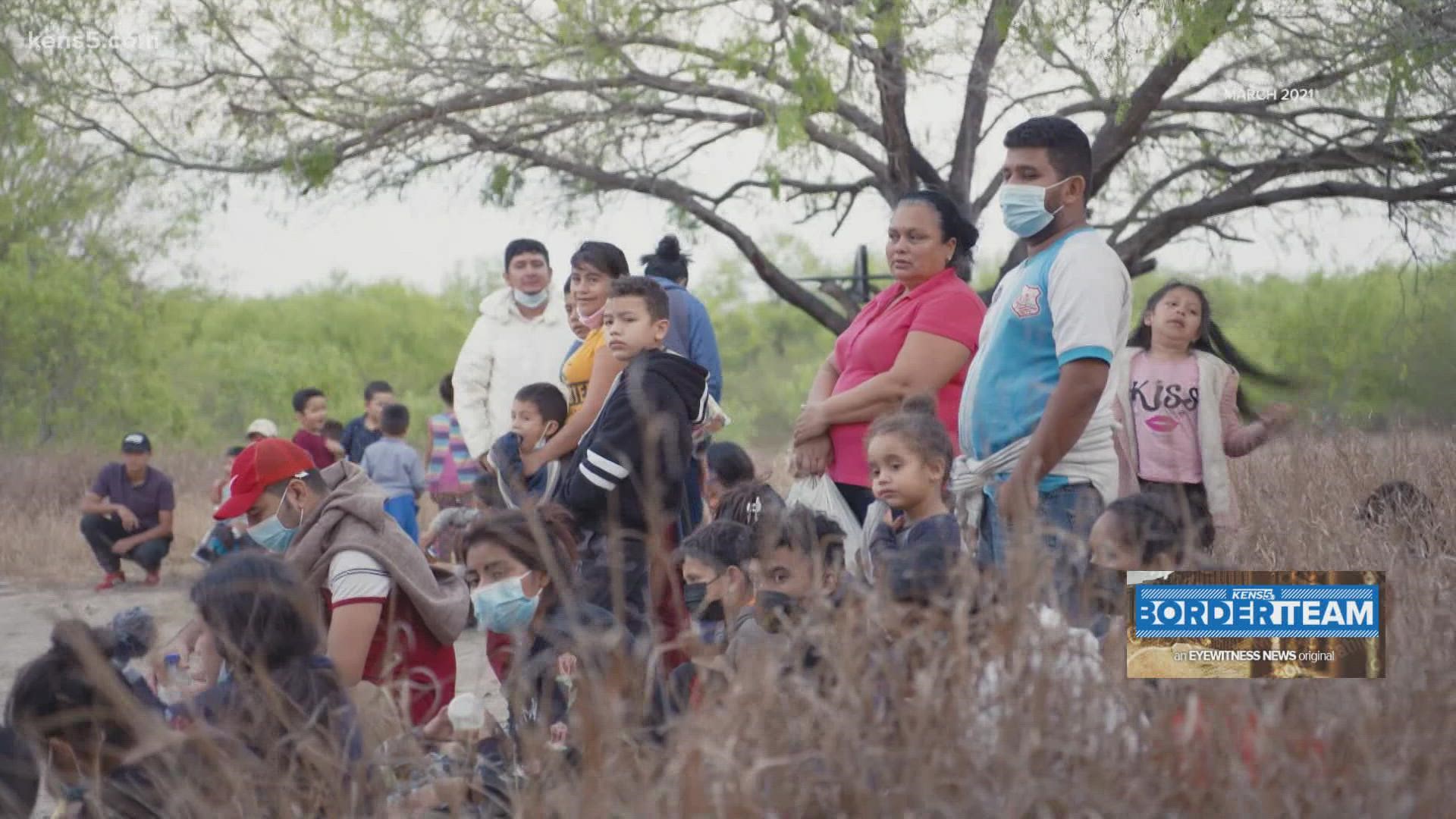WASHINGTON, D.C., USA — Who’s responsible for the crisis at the U.S.-Mexico border? The blame has been going back and forth for years, and continues during the early stages of the 2022 election cycle in Texas, where the gubernatorial race is in full swing.
The crisis was reaching “catastrophic levels” back in 2019, according to a Homeland Security Advisory Council subcommittee report, which was created by a bipartisan panel at the request of the Trump administration. In it, the panel called for immediate action and a whole-government approach.
Theresa Cardinal Brown, director of immigration and cross-border policy at the Bipartisan Policy Center in Washington, D.C., said the crisis goes back several administrations.
“This has now been going on through three different administrations, none of whom have really taken what I would call long-term steps to address the management of this new migration phenomenon in ways that are going to be effective over the long run,” Cardinal Brown said. “We need to stop thinking of the border as it existed in the early 2000s, or the 1990s. This is a new border, this is a new flow of people. That is not likely to change anytime soon.”
In October of 2018, then-Homeland Security Secretary Kirstjen Nielsen asked the Homeland Security Advisory Council to establish several new subcommittees to “undertake reviews of critical homeland security issues.”
That’s how the CBP Families and Children Care Panel was born.
The panel was to do a number of things, including provide recommendations and best practices from federal, state and local organizations “regarding care for families and children in CBP custody,” Nielsen’s letter orders.
Cardinal Brown was part of this panel , which, in April of 2019, provided its interim report, saying that due to “the steadily increasing severity of this humanitarian crisis, the Panel believes it a matter of great urgency to provide the Secretary with these emergency recommendations for immediate action without further delay.”
The executive summary of the report opened with, “there is a real crisis at our border.”
Cardinal Brown was joined on the panel by nine other experts from various backgrounds and with different political affiliations. They interviewed more than 109 subject matter experts to reach their findings.
“The report was a result of a consensus of all of our opinions,” Cardinal Brown said. “What the report said, essentially, was that the border was in crisis that the arrival of these families and children had strained the resources, infrastructure and capacity of the officials at the border to manage them to facilitate humane conditions, particularly for the unaccompanied children, and to find ways to address their needs in both in CBP custody and then what happened afterwards.”
In its interim report, the panel outlined 20 key findings while presenting seven emergency recommendations.
“The emergency recommendations outlined below are not a panacea, standing alone,” the report stated. “Without rapid action, our border enforcement and immigration management efforts will continue to collapse under the weight of continuously increasing family units from Central America and elsewhere, and be a magnet for criminal element seeking entry to the U.S., placing many more children in danger.”
Trading the blame
Three years later, the border is still in crisis.
“This administration is acting in crisis mode, much the way the previous administrations have,” Cardinal Brown said. “They came into office with promises to undo many of the programs that the Trump administration had put in place to try to manage the border, most of which I would call were crisis initiated programs.
“And what they found is that they couldn't do that; they couldn't undo all those programs without having alternatives in place.”
A steady stream of politicians who’ve been holding press events in the Rio Grande Valley since March of 2021 have been talking about what is happening at the border and placing blame.
“There is a crisis on the Texas border,” said Gov. Greg Abbott during a press event at Anzalduas Park on March 9, 2021.
On March 26, Republican lawmakers paid a visit.
Senator Ted Cruz (R-TX) called it a crisis, as did Sen. John Cornyn (R-TX).
“This is an immediate humanitarian crisis,” Cornyn said at the time.
“This crisis is a result of President Biden's open border policies,” Abbott said, earlier on March 9.
“I think it's frustrating,” Cardinal Brown now says. “I'm a policy person and I believe that there are policy answers to these questions. There are policy solutions out there, we just have to have leadership willing to take them on and do them and not let this issue continue to be used, frankly, as a political cajole, you know, against the other party.”
“It doesn't have to be either-or, it doesn't have to be build a wall, or abolish ICE,” she added. “It doesn't have to be seal it off or open borders. There are ways that the government can do a much better job of managing what they have, but they have to be more flexible.”
In April of 2021, Republican and Democratic lawmakers from Texas and Arizona proposed The Bipartisan Border Solutions Act, a bipartisan, bicameral legislation. In it, Sen. Cornyn, along with Congressmen Henry Cuellar (D-TX-28) and Tony Gonzalez (R-TX-23), proposed a number of immigration solutions.
The bill has been stuck in committees ever since.
Cornyn’s spokesperson told KENS 5 the senator has asked for a hearing on this bill many times, including this month.
Congressman Cuellar was able to secure some of the bill’s provisions in the House Homeland Security appropriations legislation expected to pass in March.

